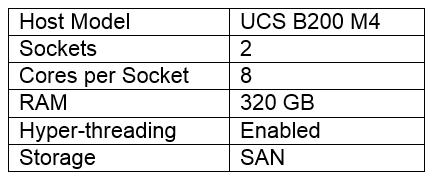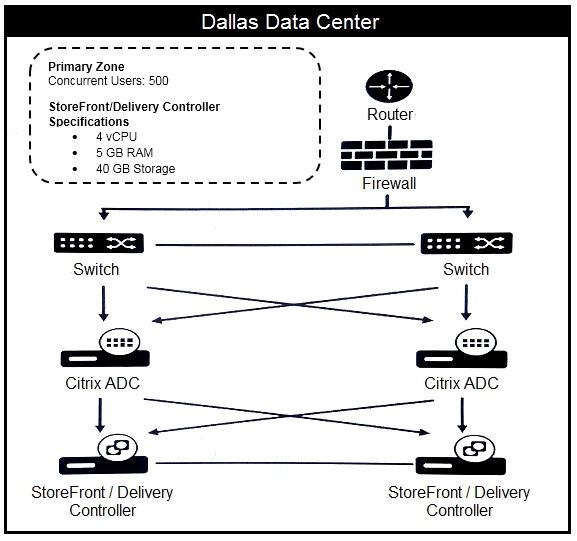Citrix 1Y0-403 - Citrix Virtual Apps and Desktops 7 Assessment Design and Advanced Configurations
Scenario: A Citrix Architect is designing a Citrix Virtual Apps and Desktops environment. The company has a small IT team with limited experience deploying and maintaining this type of environment.
To perform adequately, the line of business application used by the company must be hosted <10ms RTT
from a backend database located within a customer-managed data center.
Which Citrix Virtual Apps and Desktops environment best meets the needs of this organization?
Scenario: IT management has decided which server hardware model to use for its new Citrix Virtual Apps and Desktops Sites, but needs guidance on sizing the Hardware Layer.
Click the Exhibit button to view the host details.

A Citrix Architect is planning to install Citrix Hypervisor 7.x on this host. How many vCPUs will be available to the Citrix Hypervisor host?
Scenario: A Citrix Architect is configuring a multi-location profile strategy as part of a large Citrix Virtual Apps and Desktops solution. The architect needs to implement a single policy that sets the profile path for all users and distributes the user profiles between 3 shares and 9 file servers.
New York users: Server: NYC-FS.company.lan – Share: NYC-Profiles$
Miami users: Server: MIA-FS.company.lan – Share: MIA-Profiles$
San Francisco users: Server: SFO-FS.company.lan – Share: SFO-Profiles$
Which value constitutes a valid path for use with a Citrix Profile Management policy?
Scenario: A Citrix Architect is designing a new Citrix Virtual Apps and Desktops environment. Management has requested dynamic distribution of users between the primary and backup data centers to ensure that all available hardware is utilized during normal operations.
What is the biggest risk the architect should highlight to the customer when designing the profile strategy?
Scenario: A Citrix Architect is designing a single-Site Citrix Virtual Apps and Desktops production environment. Through earlier design discussions, the architect has determined the environment details listed in the exhibit
Click the Exhibit button to view the details.

What should the architect change in the current environment to align with Citrix leading practices?
Scenario: A Citrix Architect is creating a conceptual architecture for a Citrix Virtual Apps and Desktops environment. Based on some initial discussions around the company’s business goals and objectives, the architect collected the information shown in the exhibit.
Click the Exhibit button to view the information.

Which delivery model should the architect recommend?
Scenario: A Citrix Architect is designing a new Citrix Virtual Apps and Desktops environment. The design will require three different StoreFront stores and three corresponding Citrix Workspace app for Web sites. Each different store and Citrix Workspace app for Web site will serve different business units. Each of these will also require its own branding and SSL certificate. The solution should remain supported by Citrix.
The architect has already installed StoreFront on a server.
How can the architect achieve the desired design while keeping cost and maintenance requirements to a minimum?
Scenario: A Citrix Architect is designing a new Citrix Virtual Apps and Desktops Service environment in Citrix Cloud. During the kickoff meeting, management advised that they need a robust, scalable image-provisioning strategy that allows for easy image and application maintenance to deploy a large number of applications to users. This should include company-wide applications and departmental applications to be used only by specific sets of users. Some applications will require run-once scripts at system startup for product licensing.
Which image provisioning strategy should the architect use for this deployment?



